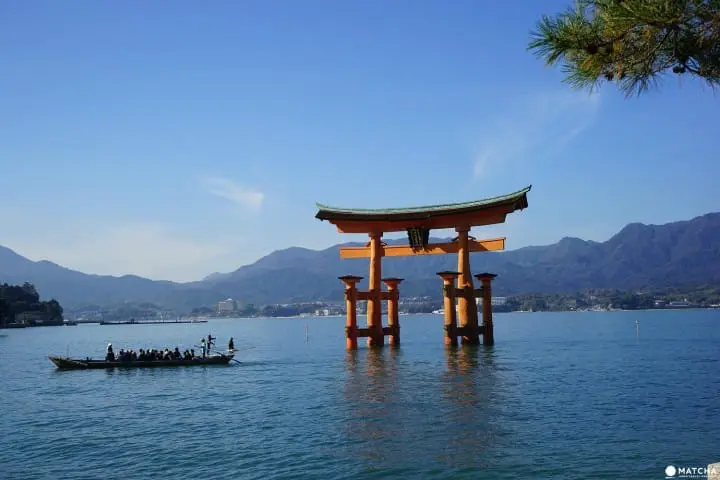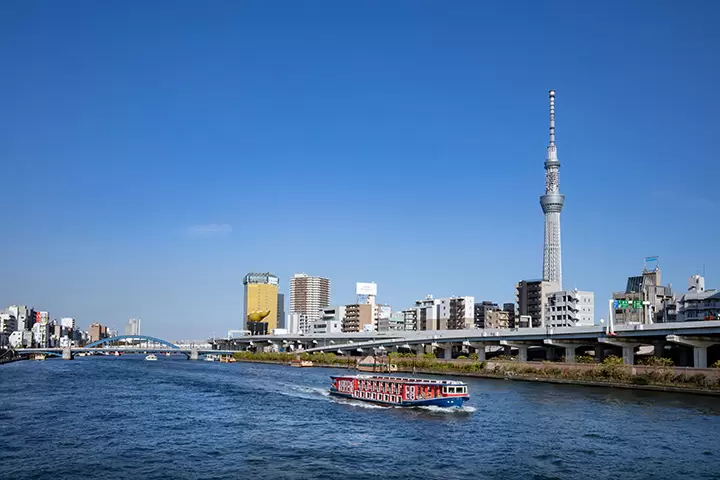Wonderful Views! 6 Must-Visit Spots In Hiroshima And Miyajima

For those who wish to enjoy as much of Hiroshima's attractions as they can during a short stay, we have picked up six spots that anyone should visit once in the area! Use the rest of your time to visit Fukuyama or Onomichi, and other places in Hiroshima!
Hiroshima Prefecture is known as a place of peace and culture. There are many spots to see in this prefecture, and many visitors from abroad not only tour Tokyo or Kyoto, but extend their trip to Hiroshima as well.
The Peace Memorial Museum and Genbaku Dome in Hiroshima city, as well as Miyajima in Hatsukaichi city, famous for its scenic beauty, are listed on various sightseeing guides. These spots should be visited by everyone during their stay in Japan.

Also, Fukuyama, a city located in the eastern region of Hiroshima Prefecture, is the home to Fukujukaikan Hall, a facility where visitors can participate in various workshops related to Japanese culture, and Fukuyama Castle. Tomonoura, which is said to have inspired the Ghibli movie "Ponyo", is also located in Fukuyama.
Another recommended spot is the Shimanami Kaido, a popular area for cyclists all over the world.
Read also
In this article, we will introduce a one-day itinerary for Miyajima and Hiroshima City. If you have the chance to visit Hiroshima, try and extend your trip to other sightseeing spots, such as Fukuyama and Onomichi.
Access to Miyajima
We recommend that you visit Miyajima in the morning. The O-torii (Grand Torii Gate) of the Itsukushima Shrine, rising from the sea, is most beautiful at high tide. Please check the tide table listed on the Japanese website of the Miyajima Tourist Association. Morning visitors will be able to see the O-torii at high tide.
If you are going to Miyajima from Fukuyama, take the San'yo Shinkansen to Hiroshima Station. The train ride will take only 23 minutes, and the fare is 5140 yen.
From Hiroshima Station, head for Miyajimaguchi. Take the JR San'yo Main Line bound for Iwakuni, and you will reach Miyajimaguchi Station in 30 minutes.

From Miyajimaguchi Station, it is a three-minute walk to the ferry port. The fare for both JR West Miyajima ferry and Miyajima Matsudai Kisen ferry is 180 yen. The JR West ferry leaves for Miyajima every 15 minutes from 8:00 a.m. to 6:00 p.m., and cruises near the O-torii of Itsukushima Shrine, so those who want to see it up close should ride this ferry.
For further information, please read Train Or Plane? How To Travel From Tokyo To Miyajima" and "How To Travel From Osaka To Miyajima.
Three Must-Visit Spots in Miyajima
1. Itsukushima Shrine
Itsukushima Shrine, designated a World Heritage Site, is the most famous spot on Miyajima.

According to ancient records, Itsukushima Shrine was founded in the 6th century, and the current shrine was built in the 12th century. The shrine has a mystic appeal, looking as though it is floating on water, and has been listed as one of the Three Views of Japan.


The buildings such as the sanctuary and the Noh stage are connected by corridors rising above the water. Visitors can also see the O-torii from the corridors, and the contrast between the vermillion of the architecture and the color of the waves is fascinating.

There are many places inside Itsukushima Shrine where visitors can take photographs, which should make a nice souvenir of their trip.
2. Senjokaku and the Five-Storied Pagoda

The official name for Senjokaku is Hokoku Jinja. It was built as a Buddhist temple in 1587 by Toyotomi Hideyoshi, a warlord of the Sengoku Period, but construction was not fully completed due to his death.
In the Meiji Period, Senjokaku became a shrine by a government ruling designed to separate Buddhism and Shintoism (*1) and has been since called Hokoku Jinja.
*1: The syncretic fusion of Shintoism and Buddhism, which prevailed in the medieval period, was banned in the Meiji Period.

This is an expansive building, expressing Hideyoshi's urge to show off his power. 'Senjo' means a thousand tatami mats, and more than 800 tatami mats can be actually laid out inside the building.
A small Shinto shrine is located inside. The walls and pictures of the entire hall are adorned with period paintings and are an impressive sight.

The five-storied pagoda standing in front of Senjokaku was built in the 15th century. At the time, Japan was engaged in trade with the Ming dynasty in China, and the influence of the Chinese culture can be seen in its flamboyant details.
3. Daishoin Temple
Daishoin is located in the hills of Miyajima, away from the seaside. It is a temple of the Shingon sect, built in the Heian Period with strong ties to Itsukushima Shrine.

Visitors go through the daimon (main gate), and climb the steps to arrive at the grounds of Daishoin, where various buildings are spread out.

If you don't want to climb the steep steps, take a left turn at the daimon. There is a gentle slope, with a large number of jizo statues lined up on both sides leading to the grounds.

Be sure to take a good look at the hondo (main temple) and the Kannon-do (a temple dedicated to Kannon), two prominent works of Japanese temple architecture. Visitors can also enter the Kannon-do, where they can see various mandala, some of which are used in the Buddhist memorial service at this temple. There is also two rare Tibetan mandalas, drawn in sand!

The view of the sea and the Hiroshima cityscape is another appeal of Daishoin.


Drop by the shopping street on your way back to the port, and try the momiji manju, a Miyajima specialty. Visitors should be able to find some souvenirs, as well.
Three Recommended Sightseeing Spots in Hiroshima City
To reach the urban areas of Hiroshima city from Miyajimaguchi, take the Hiroden (Hiroshima Electric Railway). You can watch the cityscape on your way directly to the Genbaku Dome, and the fare is 250 yen.
1. Atomic Bomb Dome

The building known as the Atomic Bomb Dome was used as an exhibition hall before World War II. It began being called the Genbaku (Atomic Bomb) Dome after the war, as this was the only structure left standing in Hiroshima after the atomic bomb was dropped on August 6th, 1945. It was designated a World Heritage site in 1996, to remind us of the importance of world peace.
In the Peace Memorial Park near the Atomic Bomb Dome, visitors can see the monuments dedicated to world peace.
2. Hiroshima Peace Memorial Museum

Hiroshima Peace Memorial Museum displays materials about Hiroshima, before and after the atomic bomb. There are also materials about the situations that lead to the bombing, and how it affected the citizens of Hiroshima. The museum was built in hopes that such a disaster would never occur again, and that peace would prevail in our world.
3. Orizuru Tower

Orizuru Tower opened in June, 2016. The top floor is an observatory, where the visitors can enjoy a sweeping view of Hiroshima city.

Along with the observatory, the tower also hosts various peace-related exhibitions as well.
In Conclusion
There are various spots and activities in Hiroshima prefecture. By planning your itineraries in advance, you should be able to enjoy both sightseeing and Japanese culture. Those who want to go on a special trip should give it a try.
Read also
Sponsored by Fukuyama City
MATCHA's promotional account for corporate and local government advertising. We aim to provide useful information to our readers in an enjoyable manner.











































![[Just a short distance from Nagoya] Popular Taiwanese YouTuber Alan tours Aichi, Tokoname!](https://resources.matcha-jp.com/resize/720x2000/2026/01/08-255181.webp)